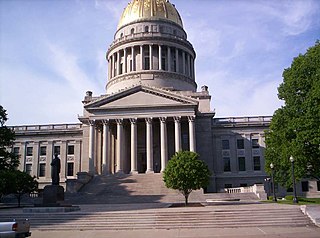Executive Branch
Women have been most present in the Texas executive branch as part of the State Board of Education. The first woman ever elected to statewide office in Texas was elected as Superintendent of Public Instruction (this position no longer exists; the duties of the former Superintendent of Public Instruction are now carried out by the appointed Commissioner of Education). [3] At the urging of Texas suffragists, Annie Webb Blanton successfully ran for the position of Superintendent of Public Instruction in 1918. She won reelection in 1920 but did not seek a third term in 1922. [4] After Blanton, several more women served as Superintendent of Public Instruction and on the State Board of Education once it was established in 1928. [3] Currently, eight of the 15 members of the State Board of Education are women, including the board's secretary.
Outside of the State Board of Education, only nine women have been elected to executive office in Texas. Women have held the tile of Governor, State Treasurer or Comptroller of Public Accounts (the State Treasurer position was officially abolished in 1996, at which point the Comptroller of Public Accounts assumed many of the duties formerly held by the State Treasurer), [5] Railroad Commissioner, and Agriculture Commissioner. Women have most commonly been elected to the positions of State Treasurer or Comptroller of Public Accounts, sometimes using these positions as springboards to other elected executive office. So far no women have acted as Lieutenant Governor, Land Commissioner, or Attorney General. [6]
| WOMEN ELECTED TO TEXAS EXECUTIVE OFFICE OUTSIDE THE STATE BOARD OF EDUCATION | ||
|---|---|---|
| NAME | POSITION | YEARS SERVED |
| Miriam Ferguson | Governor | 1925 - 1927; 1933 - 1934 |
| Ann Richards | State Treasurer Governor | 1983 - 1990 1991 - 1994 |
| Lena Guerrerro | Railroad Commissioner | 1991 - 1992 |
| Kay Bailey Hutchinson | State Treasurer | 1991 - 1993 |
| Martha Whitehead | State Treasurer | 1993 - 1996 |
| Carole Keeton Strayhorn | Railroad Commissioner Comptroller of Public Accounts | 1994 - 1998 1999 - 2006 |
| Elizabeth Ames Jones | Railroad Commissioner | 2005 - 2012 |
| Susan Combs | Comptroller of Public Accounts Agriculture Commissioner | 2007 - 2014 1999 - 2006 |
| Christi Craddick | Railroad Commissioner | 2013–Present |

Texas has had only two female governors in its history. Miriam Ferguson (Democrat) became the state's first female governor in 1924. Her husband, James Ferguson (Democrat), had previously served as Texas governor but was unable to secure his place on the ballot in the 1924 election after being impeached in his last term. Instead, Miriam entered the race and ultimately won, carrying out her first term from 1925 to 1927. Scandals in her first administration caused Ferguson to lose her party's nomination in the 1926 election. Ferguson did not run in 1928. She did run in 1930 after the Supreme Court of Texas again denied her husband's petition to enter the race, but as in 1926, she failed to earn the Democratic Party nomination. In 1932, Ferguson ultimately won her bid for a second gubernatorial term and served this term from 1933 to 1935. In 1934, Ferguson temporarily retired from public office, only returning in 1940 for a final unsuccessful gubernatorial race. [7] After Ferguson, Texas did not elect another female governor until Ann Richards (Democrat) over fifty years later in 1990. Richard first entered Texas local politics in 1976 as a Travis County Commissioner. She entered Texas state politics in 1982 when she won her first of two terms for Texas State Treasure. Richards served only one term as governor from 1991 to 1995, losing her 1994 reelection bid. [8]
While there have not been any female governors of Texas since Ann Richards, the number of women elected in the executive branch has increased since her election. Prior to 1990, Texans elected only two women to executive office outside the State Board of Education. After 1990, Texans began regularly electing women to executive offices outside the State Board of Education, and a woman has consistently held at least one executive position since 1991. Currently, the only elected woman serving in a non-State Board of Education office in the Texas executive branch is Railroad Commissioner Christi Craddick. [6]

















